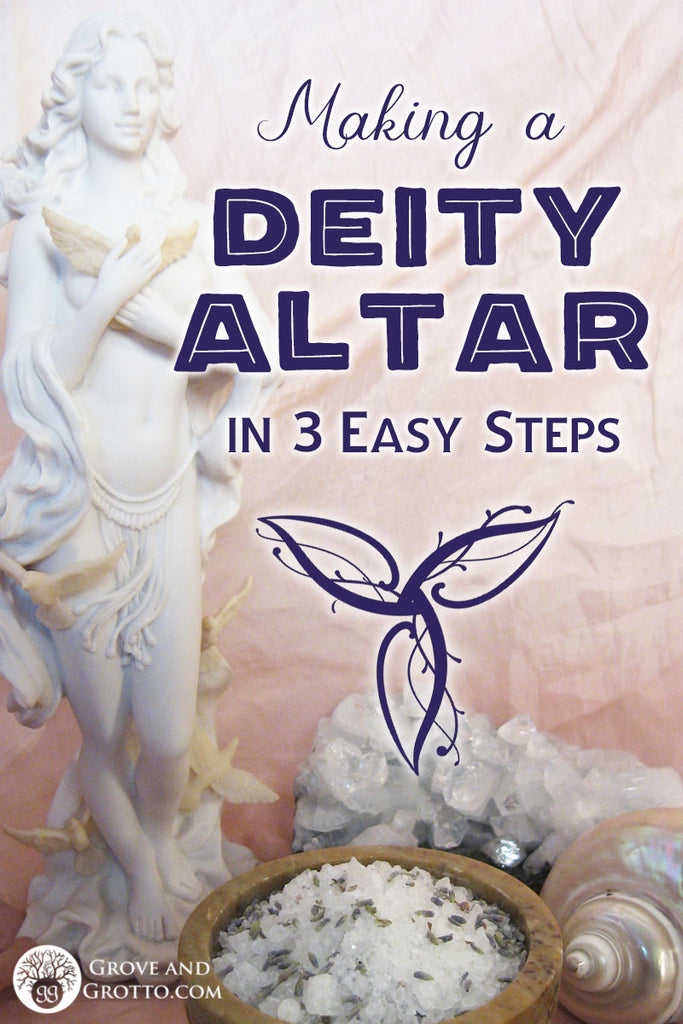
Putting together a special, purpose-built altar is a great way to connect with an individual face of the Divine. You can make an altar for your patron God or Goddess, or another deity who you're interested in learning more about. Altars can be as grand or as humble as you want them to be. You can take them down after a few days, or keep them up indefinitely. All you need is a few supplies and a bit of inspiration.
1. Choose a space.
The type of altar you construct is going to depend on the space available to you. So consider where your altar will be located. Will it be indoors or outdoors? Large or small? Public or hidden from view? Do you plan to work magick at your altar, provide offerings, or just display it?
Don't get discouraged if you don't have much space. A bookshelf, hearth, window niche, or small table makes a convenient altar. But we've also seen perfectly charming altars made from potted plants, cigar boxes, car dashboards, and more!
When choosing the location and materials, consider your deity's preferred environment. A Cernunnos altar would be best if placed outdoors, while Hestia would definitely be more comfortable near the fireplace. (But you gotta work with what you got.)
2. Invite your deity.
Once you've selected and cleared a space, you're ready to invite your deity. The Gods and Goddesses are a lot like us—most of them love to hear their names and see images of themselves. So, your chosen God or Goddess should be represented somewhere on the altar.
If you have a favorite statue or painting of Her, it would make a lovely focal point for the altar. But simpler representations are fine, too. You can use an oracle card or other printed image. If you can't find the perfect visual, you can even spell out the God's name with Scrabble tiles or runes. Sometimes you may want to keep the altar secret from co-workers or housemates. If that's the case, try a subtler symbol of the deity—for instance, a peacock for Juno.
Part of inviting the deity is dedicating the space to His or Her use, and yours. Dedications can be wordy and elaborate, or very informal: "Good evening, blessed Isis. I've made this altar in honor of you. I hope you like it!"
3. Decorate your altar.
This is the fun part: Gather anything that reminds you of your chosen deity, and arrange it in a pleasing fashion. An altar without decorations is like an unfurnished house! Paints and fabrics, crystals, candles, ritual tools, herbs, food, and drink—any of these things can go on a deity altar. Making a deity altar is a looser affair than some other types of altars, since the primary purpose is usually devotional rather than functional.
If you have a working relationship with the God or Goddess, you may already have some ideas about the things that He or She likes. An altar is where humans and Gods meet halfway, so anything you put should appeal to you as well as Her.
Need some inspiration? Just think about what you know about the God or Goddess. What part of the world is She from? What objects are used in His rituals? Is there any color, season, plant or animal that is particularly associated with Her? You can represent the Elements on your deity altar, but you don't have to--especially if the God or Goddess is tied to just one or two of the Elements. Nor does a deity altar need to be changed seasonally. (But do keep it tidy and dust-free.)
View our other articles here.
